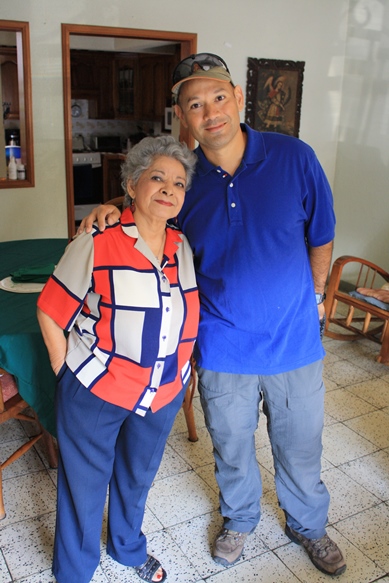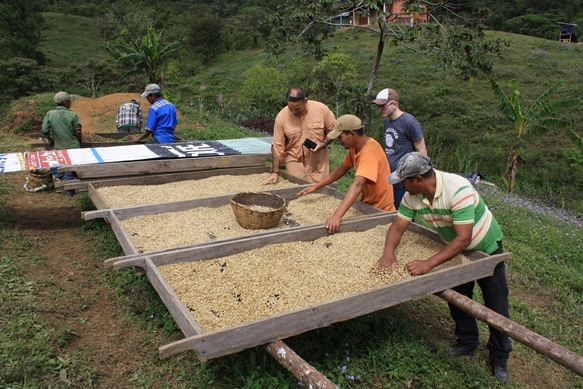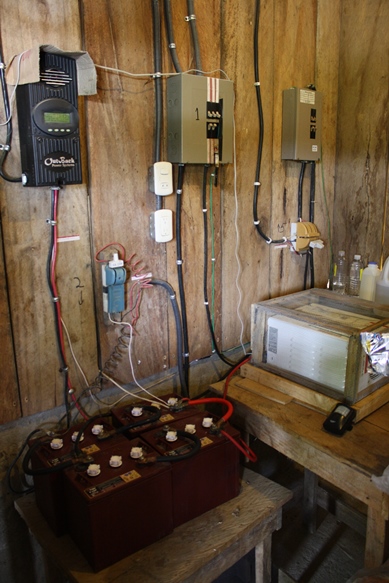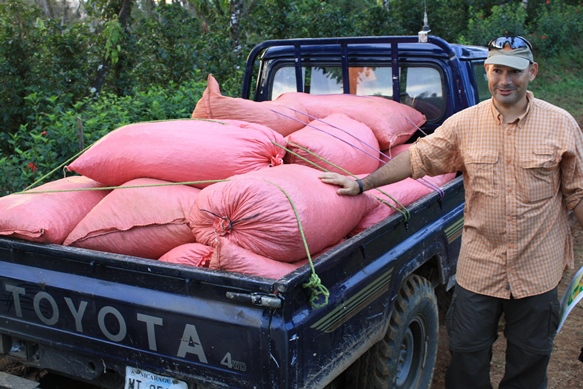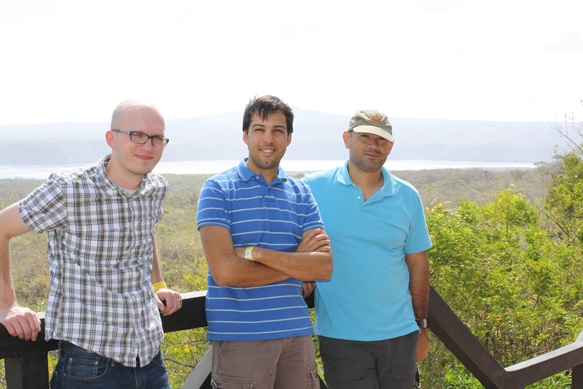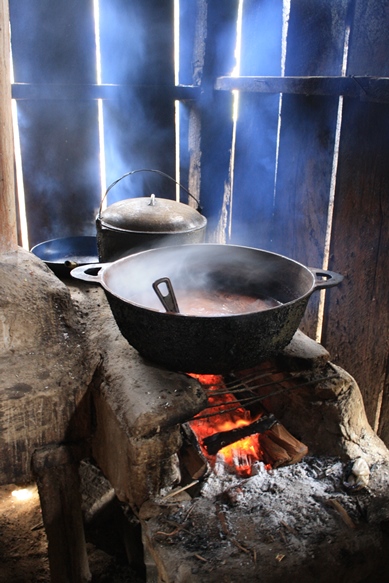Conventional wisdom says that compared to downtown Portland, the suburbs surrounding the city are a wilderness for good coffee. Suburban coffee culture is best known for its gargantuan lattes, loads of syrups, and scorched beans. The Starbuckification of the suburbs has made an average cup of coffee ubiquitous, and if you want something better, your best bet is to head closer to downtown, where the quality of a café is inversely proportional to its distance from the Willamette River (roughly).
But not all is bad outside the city limits. The coffee landscape is evolving, even in the suburbs, where it is possible to find people who care about coffee quality. Three of these are Cathy Zellmer, Matt Knight, and Adam Reid. Zellmer and Knight own Dovetail Coffee Roasters, a small wholesale roaster in Beaverton, and Reid owns Origins Coffee House (formerly Coffee’s On – Gresham) in Gresham, Dovetail’s de facto flagship café. Together, Dovetail and Origins are improving the coffee scene on both the western and eastern flanks of Portland. I spent a couple hours at Dovetail’s roastery in Beaverton, to hear what’s happening in the hinterlands.
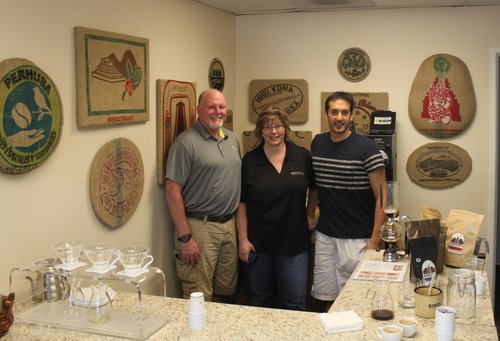
The Original Coffee Brake
Cathy Zellmer’s plans never included owning a coffee business. For many years, she ran her own independent insurance business, and the only thing she knew about coffee was that she needed lots of it to keep her going each day. Fortunately for Cathy, her office was located across the street from the Original Coffee Brake, a roastery/café founded by Ron Davis in 1993 (one article quotes Zellmer saying that she and her husband, Chuck, would spend between $400-$500 each month on coffee).
In 2004, Zellmer went back to school, with the intention of becoming a lawyer. She earned a degree in Women’s Studies at Portland State, graduating summa cum laude. She applied to law school at Lewis and Clark and prepared for a career in law. Zellmer’s plans quickly swerved off the track in 2008, when Davis announced he was retiring from the coffee business and planned to close his café. Cathy was distraught. More than a café, the Coffee Brake was also a gathering place, a community hub. Zellmer was not about to let it close, and even though she was accepted into law school, she decided to purchase the café instead.
The Coffee Learning Curve
Zellmer had a lot to learn about the coffee business, so Davis stayed around to help her get started. He stayed on as roaster for an interim period, and showed her many things about coffee in general. Seven months after she bought the café, Zellmer attended Coffee Fest in Seattle, attending every educational session she could fit into the schedule. She also drank countless espressos from the booths on the trade show floor. The trip inspired her to improve the quality and consistency of the coffee she was serving, especially the espresso.
As soon as Cathy got back to Portland, she called Matt Milletto, working as a consultant out of the American Barista and Coffee School, to come to the store to train her baristas. “I called Matt and was like, we need your services,” Zellmer recalled. Milletto came to the café and did a training session with the entire staff.
Cathy was pleased with the results. “The next morning I came in to my café,” she said, “and the morning barista was covered head to toe with coffee grounds. She was making beautiful espresso shots and was excitedly telling every customer how we had just taken a giant leap forward and could do a better job than we did the day before. She was so excited.”.
Customers greeted the changes with skepticism, but it didn’t take long for them to come around. Zellmer recalled one customer who was very particular about getting only one shot in his drink. Cathy urged him to try something new. “I put one and a half in,” she said, “because I wanted him to be able to taste the coffee, and it wasn’t so bitter. It was smoother, it was better espresso, and he was looking at me like, ‘What are you doing?’ I told him, I just want you to try this.” Cathy explained why she was doing things differently and told him if he didn’t like it, she would make him another, the old way. Not to worry. “He loved it,” she said.
Zellmer said the biggest key to gaining acceptance of the changes was the attitude of the staff. “If you’re café’s a community, and the community loves you and your people, they’ll follow you anywhere,” she said.
Leaving Retail and Gaining a Business Partner
For about three years, Zellmer ran the café (with some help from her husband, himself very busy as an engineer/manager at LSI) before changing courses again. The retail business was not Cathy’s passion, so she decided to sell the café and focus on the wholesale roasting business, calling her new venture Dovetail Coffee Roasters.
Around the same time, Knight, who has his own insurance business (he and Cathy shared an office for eight years), gradually entered the business. When Cathy and Chuck went on vacation, Matt would help out, making deliveries and shadowing Davis, to learn how to roast. “I worked in it for a few months before I said, ‘I like this,’” he recalled. In 2011, Knight became a co-owner, and now splits his time between roasting coffee and running the insurance business.
For Knight, being a roaster fits his personality. “I focus in and drill down—that’s what I like. I can take the raw product and turn it in to something you enjoy,” he said. In addition to learning from Davis, he also got some lessons from Brandon Smyth, Water Avenue Coffee’s co-owner and head roaster. (Water Avenue’s roaster was broke down one time, so Smyth came to Dovetail to roast while it was getting fixed. Knight used the opportunity to learn as much as he could from Smyth.)
Neither Zellmer nor Knight was worried about the business hurting their relationship. “We’ve always been really good work friends,” said Cathy. “We’ve always had a good business relationship, so we got to know each other that way.” If something goes wrong, they can work through it. “We have a nice foundation, and we’re able to communicate,” Matt said.
Zellmer does not regret her decision to forego law school. Although she says law still interests her, the coffee business fits her personality better. “The thing I love about coffee, is that it’s so organic,” she said. “It’s never the same. The business, the product and what I get to do every day is really organic. I get to be challenged, I get to learn something new, I get to experience something new, I get to grow. For me, it can’t get more interesting than that. I can’t imagine being a lawyer.”
Changing Suburban Coffee Culture
Zellmer and Knight’s goal for Dovetail is to improve the coffee in the suburbs around Portland. They have a willing partner in that vision in Adam Reid, who bought his café in 2011. Reid is clear about his focus for the café. “Our core value is around the coffee, and one of our fun points is showing the customers what we can do with it,” he said.
It wasn’t always that way, though. Originally, Reid planned on running a bubble tea shop, but Zellmer says she convinced him to focus on coffee instead. “He hadn’t developed a palate for coffee,” she said. “He hadn’t learned to appreciate lighter-roasted coffee.”
When Reid first bought the café, it was a typical second wave café, with a wall full of different syrups and lots of dark-roasted coffees. One of the first things he did was to reduce the number of available syrups and lower their visibility.
The coffees changed too. For the first few months they worked together, Zellmer said she and Reid pushed each other over the roast profiles. “Adam would call me and say, ‘You’ve got to roast the coffee darker,’” she said. Reid’s customers were used to darker roasts, and they complained. At first, Zellmer went along, roasting the coffee darker than she liked to. Gradually, however, they slowly changed the roast profiles, lightening them up as customers became accustomed.
Adam brought in Brandon Arends (one of the people who piqued my interest in specialty coffee) to train his baristas. To start coffee conversations with customers, Adam placed a Yama cold brew tower on the counter. In addition, Origins typically offers a single-origin espresso alongside its blend, something of a rarity outside of Portland.
Zellmer was pleased with the changes she has seen at Origins. “In the beginning, they didn’t have the greatest equipment, they didn’t have the greatest baristas, and they didn’t have the greatest coffee,” she said. “So we got to the point where we improved the coffee, and trained the baristas. I walked in there one day…to make some espressos with their people, to make sure we were on the same page. It was very clear to me that they had a high level of skill, that they knew what they were doing.”
Although I spend most of my time in Portland, I probably should not be surprised that better coffee is moving into the suburbs, through the efforts of people like Cathy, Matt, and Adam. As more people are exposed to good coffee in centers like Portland and San Francisco, they will come to expect it in other places too. Entrepreneurs will see an opportunity to stand out in the surrounding areas. If the suburban scene continues to improve, good coffee might someday be as accessible in Beaverton as it is in Downtown Portland (in my caffeine-induced, utopian coffee vision). At the very least, it will be much easier to find.
Coffee Note: When you visit a coffee roaster, it is rare to come away without tasting a few coffees. During the visit, Cathy prepared pourovers of two different Ethiopian coffees. The first, an Ethiopian Yirgacheffe, was almost tea-like, with a light body and hints of peach and citrus. The second, a natural processed Sidamo, stood out for notes of sweet plum. Adam brought some cold brew, a blend of three different coffees—the natural Sidamo, a Flores (from Indonesia), and a Peruvian coffee—that tasted like berries and chocolate.

